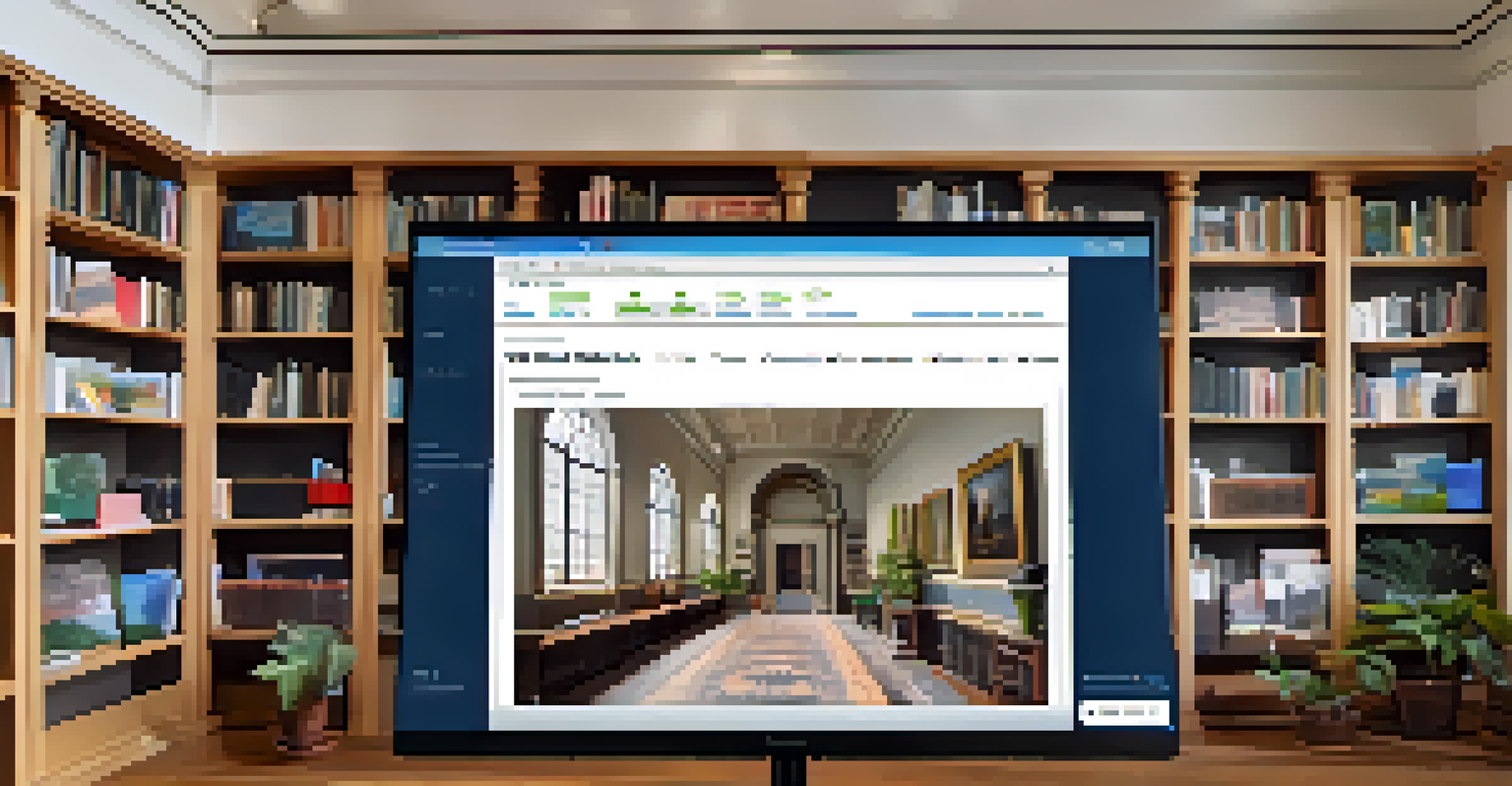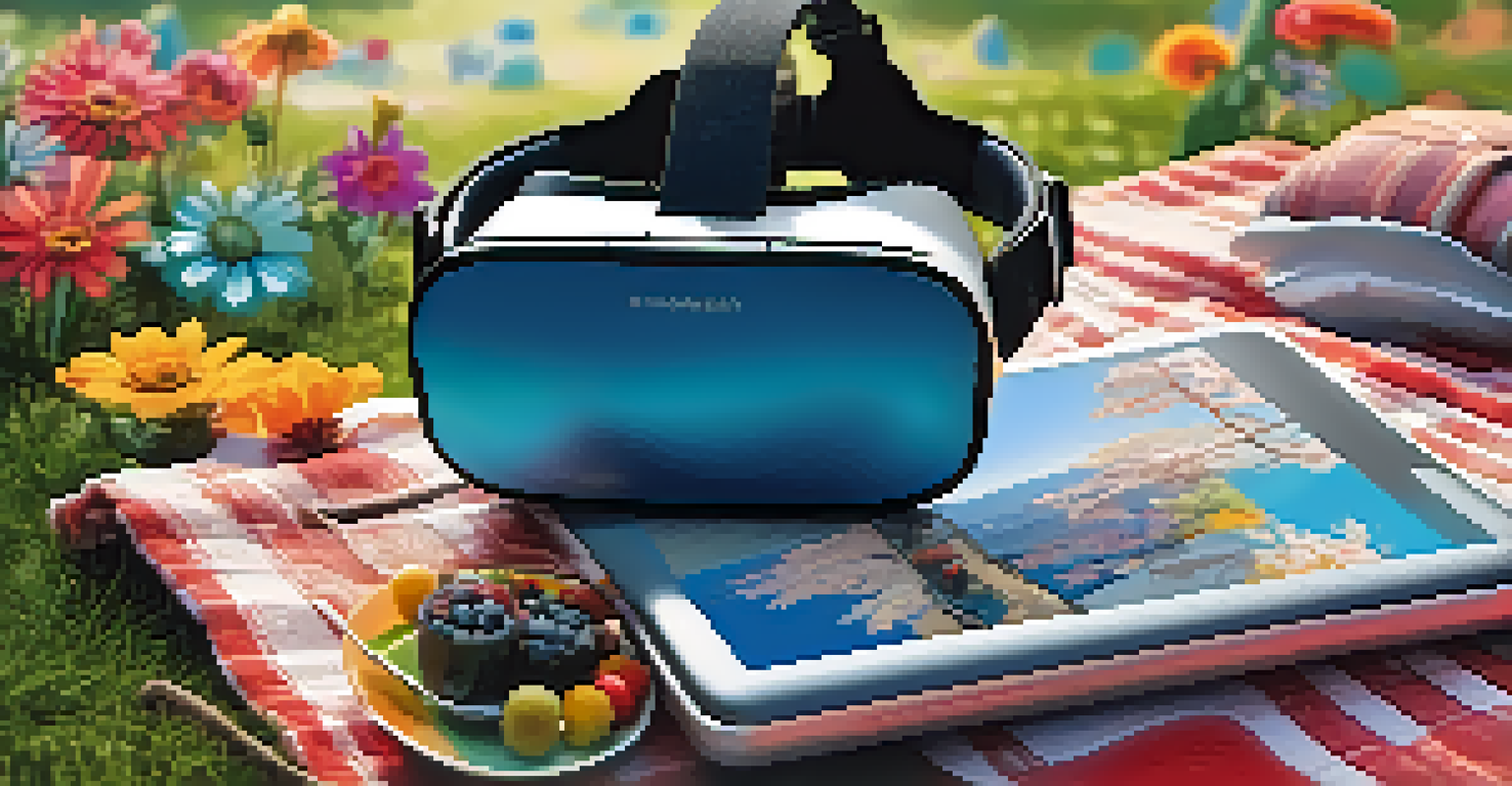The Technology Behind Effective Virtual Tours

What Are Virtual Tours and Why Do They Matter?
Virtual tours are immersive experiences that allow users to explore a space digitally. They can range from real estate listings to museum exhibits, giving viewers a feel for the location without being physically present. This technology has become increasingly important, especially in a world where remote access is often necessary.
Virtual reality is a new technology that can create immersive experiences, allowing users to engage with content in ways that were previously unimaginable.
The significance of virtual tours lies in their ability to enhance engagement and accessibility. For instance, potential homebuyers can walk through properties from the comfort of their couch, eliminating the need for multiple in-person visits. This not only saves time but also broadens the audience reach for businesses and organizations.
Moreover, virtual tours can elevate marketing strategies. By showcasing spaces in a dynamic way, businesses can capture attention and retain interest more effectively than with traditional photos or videos. This innovative approach is reshaping how we experience locations and interact with brands.
Key Technologies Powering Virtual Tours
At the heart of effective virtual tours is a combination of several technologies. 360-degree cameras are essential in capturing panoramic views of spaces, allowing users to navigate through them seamlessly. These cameras record images that, when stitched together, create an interactive environment for viewers to explore.

In addition to 360-degree imagery, virtual reality (VR) and augmented reality (AR) are making significant strides in enhancing user experiences. VR immerses users in a simulated environment, while AR overlays digital elements onto the real world, creating a unique blend of both worlds. These technologies can make virtual tours not only more engaging but also more informative.
Virtual Tours Boost Engagement
They enhance accessibility and allow users to explore spaces remotely, making them valuable for various industries.
Another key player is software that enables the creation of interactive elements within virtual tours. This can include hotspots that provide additional information, links to related content, or even embedded videos. These features enhance the storytelling aspect of the tour, making it a more enriching experience for users.
The Role of Software in Virtual Tour Creation
Creating a virtual tour involves specialized software that allows users to edit and stitch together images. Many solutions offer user-friendly interfaces, enabling even those without technical skills to create stunning tours. This democratization of technology has led to a surge in virtual tour offerings across various industries.
The best way to predict the future is to invent it.
Some popular software options include Matterport, Kuula, and Pano2VR, each providing unique features tailored to different needs. Matterport, for example, is well-known for its high-quality 3D scans, which can be particularly appealing for real estate professionals. Kuula, on the other hand, emphasizes ease of use, making it accessible for small businesses and individuals.
As software continues to evolve, we can expect even more features that enhance interactivity and user engagement. For instance, artificial intelligence is beginning to play a role in automating certain processes, making it easier for creators to produce high-quality virtual tours more efficiently.
Importance of User Experience in Virtual Tours
User experience (UX) is a critical component of virtual tours. A well-designed tour should be intuitive, allowing users to navigate effortlessly through spaces. If a tour is cumbersome or confusing, it can lead to frustration and disengagement, defeating its purpose.
To enhance UX, designers often incorporate features like guided tours, which provide users with a curated experience. This can be particularly useful in educational settings, where the aim is to inform and engage. Additionally, responsive design ensures that virtual tours are accessible across various devices, from desktops to smartphones.
Tech Powers Interactive Experiences
Key technologies like 360-degree cameras, VR, and AR create immersive environments that enrich user experiences.
Feedback from users is invaluable in refining virtual tours. By analyzing how users interact with a tour, creators can make informed adjustments to improve functionality and engagement. This iterative process is key to ensuring that virtual tours remain relevant and effective.
Real-World Applications of Virtual Tours
Virtual tours have found applications across diverse industries, each reaping unique benefits. In real estate, for instance, agents can showcase properties to potential buyers globally, increasing their chances of closing a sale. This technology eliminates geographical barriers, making it easier for clients to explore homes without traveling.
In education, virtual tours enable students to visit historical sites or museums from their classrooms. This not only enhances learning experiences but also makes education more accessible to those who may not have the means to travel. Schools can take students on virtual field trips, sparking curiosity and engagement.
Healthcare is another area where virtual tours are proving beneficial. Hospitals and clinics can offer virtual walkthroughs, helping patients familiarize themselves with facilities before an appointment. This can ease anxiety and improve overall patient experience, showcasing the versatility of virtual tours in various sectors.
Challenges in Creating Effective Virtual Tours
Despite their many advantages, creating effective virtual tours comes with challenges. One of the primary hurdles is ensuring high-quality imagery that accurately represents the space. Poor-quality visuals can lead to a negative impression, causing viewers to disengage.
Another challenge is the need for technical skills and resources. While software options are becoming more user-friendly, there is still a learning curve involved. Creators must invest time in mastering tools and techniques to produce appealing and functional tours.
User Experience is Crucial
A well-designed user experience ensures seamless navigation and engagement, which is vital for the effectiveness of virtual tours.
Additionally, keeping virtual tours updated is crucial for maintaining relevance. Spaces change over time, and if a tour does not reflect those changes, it can mislead users. Regular updates and maintenance are essential to ensure that virtual tours remain accurate and engaging.
The Future of Virtual Tours: Trends to Watch
Looking ahead, the future of virtual tours is bright, with several emerging trends that promise to enhance user experiences. One significant trend is the integration of artificial intelligence, which can personalize tours based on user preferences. Imagine a tour that adapts in real-time to highlight features that matter most to you.
Another trend is the rise of social features, allowing users to share their experiences with friends or collaborate on tours. This social aspect can help create a sense of community around virtual tours, making them more engaging and interactive.

Additionally, as technology advances, we can expect improvements in accessibility features. Providing options for users with disabilities will ensure that virtual tours can be enjoyed by everyone. The goal is to create inclusive experiences that cater to diverse audiences, further solidifying the role of virtual tours in our digital landscape.